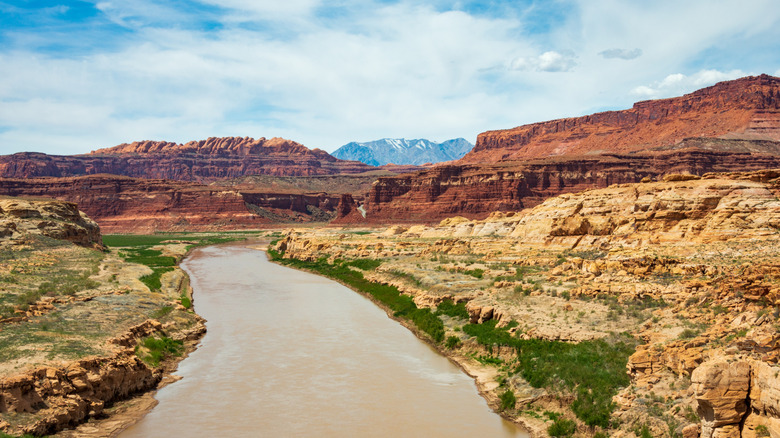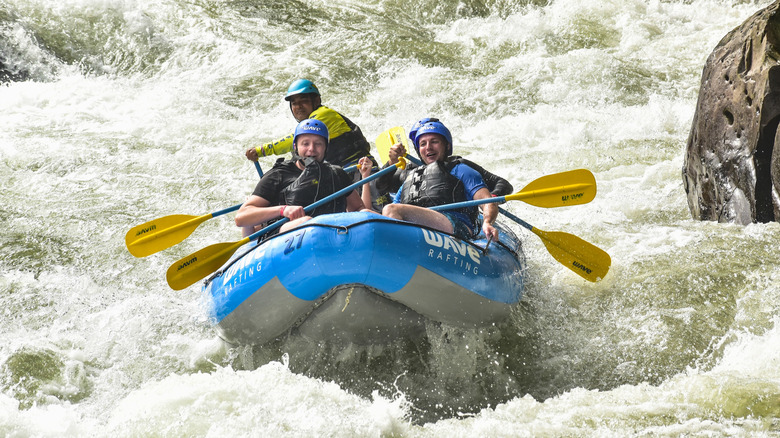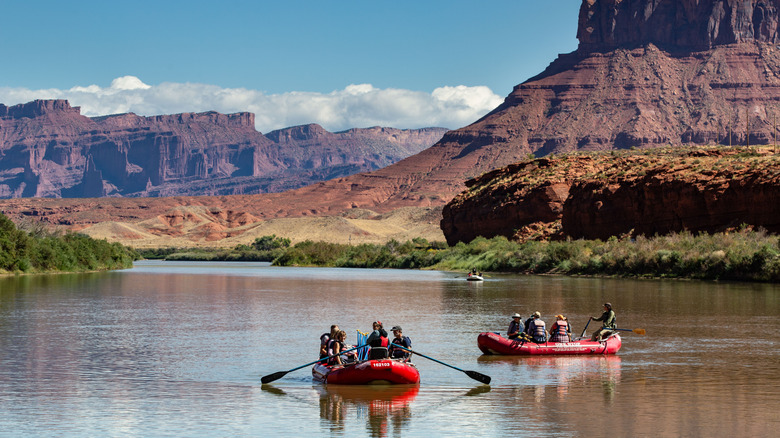Cataract Canyon is one of the country’s most legendary whitewater rafting destinations, located deep within Canyonlands National Park in southern Utah. The area is known for its heart-pounding range of rapids, from class III to class V, especially during the spring snowmelt. Cataract Canyon is 46 miles long, with 14 miles of whitewater, beginning at the confluence of the Colorado and Green Rivers. Depending on your launch site, an entire Cataract Canyon float can reach nearly 100 miles.
A typical Cataract Canyon trip begins in Moab, Utah, at the Moab dock or just south of town at the Potash boat ramp. For a longer but less crowded experience, visitors can launch in the Green River from the city of Green River, one of Utah’s cutest riverfront cities, surrounded by scenic canyons near the national parks. Getting to Green River is most accessible by car via I-70 from the east or west, while Moab is accessed from I-70 via US 191.
For visitors flying in, Salt Lake City International is the closest international airport, 238 miles away. For regional flights, Grand Junction Regional Airport is 114 miles to the east, and Canyonlands Field Airport is just 18 miles from Moab. Each of the three airports offers rental car options to access the town. If you’re in from out of town, local outfitters can provide all the equipment needed for a thrilling whitewater rafting trip down Cataract Canyon.
Routes and rapids in Cataract Canyon
Whether you’re launching on the Green or Colorado River, your trip to Cataract Canyon will likely be quite calm at first. On the Green River side is the breathtaking Labyrinth Canyon, a family-friendly flatwater paddling experience, or a launch point from Mineral Bottom in Stillwater Canyon. From Moab, it’s a float down a family-friendly class III portion of the Colorado River. It’s not until the two rivers merge at Cataract Canyon that the true adventure begins.
From the Potash launch point just south of Moab, at 47.5 miles into the trip, the Green and Colorado Rivers will converge. At mile 54.6, a sign on the left side of the river will warn rafters of the rapids ahead in Cataract Canyon. This area is a good stopping point as there’s also a logbook for communicating potential camping spots. Over the next 14 miles, there are over 30 rapids ranging in intensity.
Mile 66 holds three of the most iconic rapids along Cataract Canyon: Big Drop 1, Big Drop 2, and Big Drop 3. These legendary obstacles are one class III and two class IV rapids, all within one mile. During high water levels in the spring, they are so close that there isn’t room to pull over and scout a route between the latter two rapids. Several small rapids come along in the next few miles until you reach Lake Powell, a typical takeout point.




